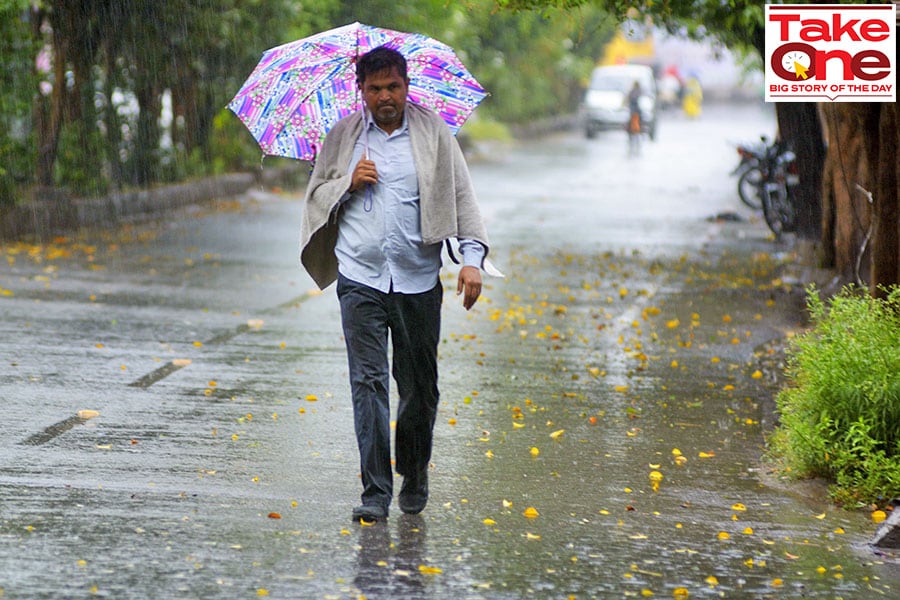
Monsoon pivotal for government to manage inflation & growth in pre-election year
Approximately 50 percent of the country's net sown area relies on the monsoon rains, which also replenish water reservoirs
 Indian Meteorological Department (IMD) had said, earlier, that monsoon rainfall will make its landfall on June 4, but it has been delayed so far.
Image: Sakib Ali/Hindustan Times via Getty Images
Indian Meteorological Department (IMD) had said, earlier, that monsoon rainfall will make its landfall on June 4, but it has been delayed so far.
Image: Sakib Ali/Hindustan Times via Getty Images
Monsoon and widespread distribution of rainfall will play trump card for the government in its combat against inflation, and boost growth in a pre-election year that typically sees more expenditure. With high food inflation, subdued rural consumer demand and threat of El Niño looming large, monsoon will play a critical factor in economic recovery, most importantly, agricultural income. India will hold general elections in 2024.
“The rains will be critical for the economy – and for the government as it manages inflation and growth in a pre-election year, especially with El Niño risks appearing on the horizon,” says Rahul Bajoria, MD & head of EM Asia (ex-China) Economics, Barclays.
He adds that more than start of the monsoon, progress of rainfall will be keenly watched in the coming weeks, as it will be important not just for kharif crop cycle, but also to gauge water availability for the rabi crop cycle. Rabi or summer crops are sown around mid-November, mostly after shower of monsoon rains, and harvesting begins in April or May. Kharif crops, also known as monsoon crops or autumn crops, are cultivated and harvested between June and November, depending on the area.
Indian Meteorological Department (IMD) had said, earlier, that monsoon rainfall will make its landfall on June 4, but it has been delayed so far. IMD had projected rainfall for the upcoming June-September monsoon season at 96 percent of the Long Period Average (LPA), within the ‘normal’ range (96-104 percent of LPA). This contrasts slightly from the forecast of private forecaster Skymet, which sees ‘below normal’ monsoons at 94 percent of LPA, due to El Nino conditions. The IMD downplayed the El Nino impact, expecting such conditions to develop in the second half of the season and stating that there was normal or above-normal rainfall in 40 percent of El Nino years.
El Nino refers to the unusual warming of the surface ocean waters in the equatorial Pacific region which affects the global climate. In the case of India, the occurrence of El Nino is linked with poor monsoon.







